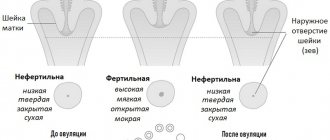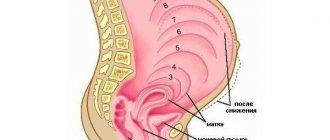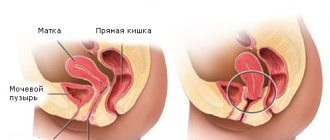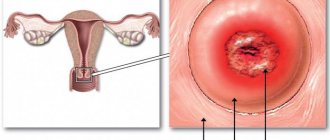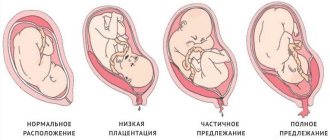The female body is strikingly different from the male one. This statement is well known, but not every person realizes how much they differ. But in the female body, when necessary, new organs appear, and when the need for them disappears, they disappear without a trace. Incredible, right?
The situation that requires such amazing abilities from a woman is simple and obvious - pregnancy. This period is characterized by the development of even 2 temporary organs: the corpus luteum and the placenta. True, they do not appear simultaneously, but sequentially.
Both of these organs are of great importance for the development of the baby and the maintenance of pregnancy. And, unfortunately, both of them can have different pathologies. This includes placental abruption, a different number of vessels on the umbilical cord, and a low-lying placenta. The latter, by the way, is the most common. What does low placenta mean? The question is complex, first you need to understand what the placenta is.
The concept of norm
If you regularly and correctly examine the cervix, you will notice that it is quite mobile, its location and structure changes depending on the phase of the menstrual cycle, which allows you to plan a pregnancy.
To determine the location of the cervix, inspection should be carried out daily.
- You should first wash your hands, treat them with an antiseptic, and you can apply a water-based lubricant.
- Take a comfortable position - to accurately determine whether your neck is low or high, it is better to sit on the edge of a bathtub or chair, with your legs spread as wide as possible.
- Carefully insert 1-2 fingers into the vagina and palpate the cervix.
If the cervix is located close to the vaginal opening, what does this mean? A low position means that ovulation has not yet occurred, which means conception is impossible.
The organ drops lower than usual in early pregnancy due to increased secretion of progesterone.
You need to carefully diagnose the location of the cervix, trim your nails, and avoid making sudden and hasty movements. If pregnancy is suspected, self-examination should be discontinued.
Soft cervix during pregnancy
The body of the expectant mother is “prepared” for childbirth in advance. Softening of the cervix indicates readiness for childbirth. Let's figure out why the cervix becomes softer before childbirth? This occurs under the influence of prostaglandin mediators, special physiologically active substances, the level of which increases sharply during pregnancy. Effective preparation for childbirth is possible due to their systemic effect on the body.
How do you know if your cervix is ready for labor?
The term gynecologists call “mature cervix” means that it is shortened, soft, and the cervical canal is passable. There are special diagrams and tables designed to accurately determine the level of “preparedness” of the cervix for the process of childbirth. Each indicator is assessed with a certain number of points. Based on the sum of the points received, the gynecologist analyzes the result, indicating the level of readiness of the cervix. Based on the data obtained, the doctor chooses the optimal tactics for labor management.
Low position
The uterus is in an unstable, suspended state; the organ is held in place by the pelvic floor muscles. When their tone weakens, due to frequent abortions or difficult childbirth, in the presence of cysts, fibroids or fibroids, it moves downwards - this means that prolapse has begun; without timely treatment, its complete loss may occur.
The uterus is located low - how the disease develops.
- At the initial stage, the displacement of the uterus relative to the anatomical boundaries is almost imperceptible, there are no symptoms of the disease, and only a doctor can draw conclusions about the presence of pathology.
- At stage II, the uterus drops quite low, which means that with strong straining or heavy lifting, partial prolapse may occur.
- At stage III, incomplete prolapse is diagnosed, which means that the displaced organs can be felt independently.
- In stage IV, the uterus is located very low, which means that it has completely prolapsed.
Signs
If the uterus is located low to the entrance to the vagina, then characteristic symptoms appear that cannot be ignored.
Signs indicating a low position:
- constant pulling, pressing pain of varying degrees of intensity, which can radiate to the sacral or lumbar spine;
- there is a feeling of a foreign body in the vagina;
- a woman is bothered by a frequent urge to empty the bladder, discomfort occurs during urination and sexual intercourse;
- if the organ is located low, the volume of discharge increases, sometimes blood is present in the leucorrhoea.
Companions of a low position include constipation, painful and heavy periods, cycle failure, recurrent thrush, and frequent inflammatory processes of the pelvic organs.
Introduction of an embryo into the uterus symptoms and signs
After implantation, global changes begin to occur in the body, which have the ultimate goal of the birth of a new life.
The progress of these processes is heralded by a number of symptoms.
:
- Bloody discharge in small volumes. The attachment of the zygote to the uterus does not occur without mechanical damage to the tissue. Blood from the ruptured vessels comes out through the vagina;
- Dull pain in the lower body;
- Increased body temperature. Many women mistake this for the onset of a cold, but this condition is quite normal and lasts until the 90th day of pregnancy;
- The urge to vomit and a state of general loss of strength. The ability to coordinate movements is lost for some time;
- Frequent mood swings, characteristic of the condition during the period of PMS.
Only the first of the above signs is observed in all women. The manifestation of the rest depends on the pain threshold of a particular person and individual characteristics.
Suddenly, a healthy-looking woman begins to feel unwell, her temperature rises, and nausea sets in. But there is no reason to sound the alarm and assume diseases that do not exist. This condition is quite normal when the fertilized egg is attached to the uterus.
In this video, obstetrician Oleg Maslov will tell you what happens in a woman’s body at the moment of conceiving a child, and will show how the process of fertilization of the uterus and the attachment of the amniotic egg occurs:
Pathology during pregnancy
How dangerous is a low uterus during pregnancy? If the uterus is located low, then this is not a direct contraindication for pregnancy; the gynecologist, as a rule, assesses the position of the organ individually and observes the movement of the uterine body during gestation. If the prolapse is too low, a set of measures is taken to maintain the pregnancy.
Consequences of a low-lying uterus in pregnant women:
- early miscarriage;
- increased likelihood of infectious pathologies;
- proctological complications - constipation, colitis, flatulence, fecal incontinence;
- congestion, varicose veins - develop due to impaired blood flow;
- As the fetus grows, the uterus will continue to shift and sink very low, which can lead to its prolapse.
Treatment and prevention of low placentation
What to do if you have a low-lying placenta? The recommendations are quite simple. First of all, there is no need to worry again. For the most part, women with this pathology carry a child to term without any problems and give birth to it on their own. To do this, it is usually enough to listen to the doctor and do everything he says. Well, excess anxiety is unlikely to have a positive effect on pregnancy.
Unfortunately, drug treatment for low placentation during pregnancy is impossible. In most cases, you can only wait for the placenta to take a more suitable place on its own. This is not only possible, but also most likely. The uterus is constantly growing, which contributes to changes in position. So, if a woman is diagnosed with “low placentation” at 20-22 or even 32 weeks, this is not a death sentence. It is believed that before 36 weeks the position of the placenta may well change.
Get into the habit of placing a pillow under your feet when you lie down. And, of course, do not miss scheduled visits to the doctor, and if the gynecologist advises you to go into conservancy, do not neglect this advice.
Treatment
One of the best and most effective means is a bandage, which supports the muscular organ in its natural position, reduces the load on other organs, the spine, and promotes even distribution of weight.
Main therapeutic methods:
- Kegel gymnastics – exercises aimed at strengthening the muscles of the pelvis, abs, and buttocks;
- installation of a pessary is a simple method of treatment; a plastic ring reliably fixes the organ in the desired position;
- surgical correction is usually performed after childbirth.
As an additional treatment method for non-pregnant women, you can use the herb fumica - 5 g of crushed raw material, pour 400 ml of water, leave for 8 hours, strain. Take 70 ml three times a day 30 minutes before meals. Sitz baths with Datura also help - 5 tbsp. l. pour 5 liters of water over the herbs, cook for a quarter of an hour over low heat, cool to 35 degrees. The duration of the procedure is 15 minutes. The advisability of using alternative medicine should be discussed with your doctor.
The location of the uterus is an indicator that is subject to observation, especially during pregnancy and menopause. Often the uterus can be low if a woman has had many births. If you consult a doctor in a timely manner, you can cure the disease using conservative methods and gymnastics. In the advanced stage, surgery and long-term recovery will be required.
The concept of norm
If you regularly and correctly examine the cervix, you will notice that it is quite mobile, its location and structure changes depending on the phase of the menstrual cycle, which allows you to plan a pregnancy.
To determine the location of the cervix, inspection should be carried out daily.
- You should first wash your hands, treat them with an antiseptic, and you can apply a water-based lubricant.
- Take a comfortable position to accurately determine whether your neck is low or high, it is better to sit on the edge of a bathtub or chair, spread your legs as wide as possible.
- Carefully insert 12 fingers into the vagina and palpate the cervix.
If the cervix is located close to the vaginal opening, what does this mean? A low position means that ovulation has not yet occurred, which means conception is impossible.
The cervix is low during, immediately after, and before menstruation. If it is impossible to palpate the cervical region, this means that the uterus is located high and is in the ovulation phase.
The organ drops lower than usual in early pregnancy due to increased secretion of progesterone.
You need to carefully diagnose the location of the cervix, trim your nails, and avoid making sudden and hasty movements. If pregnancy is suspected, self-examination should be discontinued.
Types of placenta location
Usually the placenta is attached to the back wall of the uterus closer to its fundus . It is worth noting that the uterus is an inverted vessel, and its bottom is located on top. This is the most optimal option for the location of the placenta. However, this does not always happen. In some cases, the placenta is attached to the anterior wall. Which is also not a pathology.
A low-lying placenta during pregnancy is much more dangerous. If the placenta is low, it is subject to greater pressure from the fetus, and with any external influence, the risk of damage to the placenta or its detachment increases. In addition, in the later stages, an actively moving baby can also damage the placenta or compress the umbilical cord.
Another disadvantage of a low placenta is that the lower part of the uterus is not as well supplied with blood as its bottom. All this is fraught with fetal hypoxia - an acute lack of oxygen. The location of the placenta is called low when there is less than 6 cm between its lower edge and the os of the uterus.
If the placenta is located low, but on the back wall of the uterus , then most likely the situation will correct itself, and the placenta will migrate to a higher position. The anterior wall has a greater tendency to stretch, and migration is also characteristic of it, but the direction of migration is opposite: usually the placenta moves in the opposite direction, down to the cervix.
An even more complex and dangerous pathology of the location of the placenta is its partial or complete presentation. Presentation is a condition when the placenta partially or completely covers the os of the uterus. Read more about placenta previa →
Low position
The uterus is in an unstable, suspended state; the organ is held in place by the pelvic floor muscles. When their tone weakens, due to frequent abortions or difficult childbirth, in the presence of cysts, fibroids or fibroids, it moves downwards, which means that prolapse has begun; without timely treatment, its complete loss may occur.
The uterus is located low as the disease develops.
- At the initial stage, the displacement of the uterus relative to the anatomical boundaries is almost imperceptible, there are no symptoms of the disease, and only a doctor can draw conclusions about the presence of pathology.
- At stage II, the uterus drops quite low, which means that with strong straining or heavy lifting, partial prolapse may occur.
- At stage III, incomplete prolapse is diagnosed, which means that the displaced organs can be felt independently.
- In stage IV, the uterus is located very low, which means that it has completely prolapsed.
Signs
If the uterus is located low to the entrance to the vagina, then characteristic symptoms appear that cannot be ignored.
Signs indicating a low position:
- constant pulling, pressing pain of varying degrees of intensity, can radiate to the sacral or lumbar spine,
- there is a feeling of a foreign body in the vagina,
- a woman is bothered by a frequent urge to empty the bladder, discomfort occurs during urination and sexual intercourse,
- if the organ is located low, the volume of discharge increases, sometimes blood is present in the leucorrhoea.
Companions of a low position include constipation, painful and heavy periods, cycle failure, recurrent thrush, and frequent inflammatory processes of the pelvic organs.
Pathology during pregnancy
How dangerous is a low uterus during pregnancy? If the uterus is located low, then this is not a direct contraindication for pregnancy; the gynecologist, as a rule, assesses the position of the organ individually and observes the movement of the uterine body during gestation. If the prolapse is too low, a set of measures is taken to maintain the pregnancy.
Consequences of a low-lying uterus in pregnant women:
- early miscarriage,
- increased likelihood of infectious pathologies,
- proctological complications: constipation, colitis, flatulence, fecal incontinence,
- congestion, varicose veins develop due to impaired blood flow,
- As the fetus grows, the uterus will continue to shift and sink very low, which can lead to its prolapse.
If the uterus is low, this means that after the 12th week the woman will have to remain in bed until the end of pregnancy. Women with this diagnosis often experience severe complications after natural delivery, so doctors recommend a cesarean section.
Pathology or feature: low position of the fetal head
At the next ultrasound examination or at an appointment with a gynecologist, expectant mothers will learn about a diagnosis such as low position of the fetal head. It is usually placed from 22 to 35 weeks of pregnancy, which is very frightening for women expecting offspring.
During a normal pregnancy, the fetus drops a few weeks before birth, but sometimes this happens earlier. There is no need to panic or worry in this situation; low position of the fetus is not a pathology. This is most likely a feature of a particular female body.
However, with this feature, gynecologists do not exclude the risk factor for premature birth, for the reason that the baby’s head puts pressure on the cervix, promoting its dilation. Often pregnant women feel aching pain in the lower abdomen, which should not be a cause for concern.
Another danger is that when the baby’s head is low, there is a risk of oxygen starvation, which will negatively affect the development of the child. Important! During this period, the expectant mother should be under the supervision of a doctor and be extremely careful.
The risk of miscarriage can be:
- painful and prolonged uterine tone;
- shortened cervix (less than 2 cm);
- spotting, which is a symptom of placental abruption.
In this case, the woman is treated inpatiently with the use of medications in order to preserve the pregnancy and child. In some cases, the cervix is sutured or a special ring is placed on it, which makes it possible to carry the baby to the due date set by the gynecologist.
A pregnant woman cannot independently determine the low position of the baby. According to doctors, she may suspect this (constant nagging pain in the lower abdomen, uterine tone, spotting), but only a specialist can diagnose the position of the fetus after examination.
In obstetrics, there are two methods for determining the position of the fetus. Using the manual examination method, an experienced gynecologist can determine the position of the child and how far the baby’s body is from the entrance to the cervical canal. Ultrasound diagnostics during pregnancy will help not only to determine the position of the baby’s head, but also to determine the condition of the cervix.
According to folk superstitions, a low position of the baby's head indicates the birth of a girl. Gynecologists refute this assumption, since this fact is not confirmed by anything. The position of the baby depends only on the individual characteristics of the expectant mother.
When doctors detect this feature, they do not prescribe any medications or treatments. However, in order to reduce the discomfort of pregnant women, it is necessary to listen to the recommendations and advice of experienced obstetricians, which are as follows.
Reduce physical activity:
- refuse training and visits to gyms;
- do not lift heavy objects;
- do not wear high heels.
Refuse sexual intercourse, since during intercourse the uterus contracts strongly, which contributes to the opening of the cervical canal.
Emotional peace, which contributes to pregnancy without worries and worries. It is also recommended to take sedatives (valerian, motherwort) that do not harm the baby.
Wear a bandage - a special medical bandage that will support the pregnant woman’s belly and prevent the baby from being born prematurely. A bandage can be purchased at any pharmacy or medical service, and the seller will help you choose a bandage in accordance with the size and purpose. Wearing a bandage prevents frequent contractions of the uterus and reduces the pressure of the baby's head on the cervix.
The bandage should be worn only during the second period of pregnancy and should be worn exclusively in a horizontal position with relaxed body muscles.
With a low presentation of the child, there is a possibility of exacerbation of hemorrhoids. Doctors strongly recommend:
- review your diet;
- eat foods high in fiber;
- eat little and often;
- drink enough fluids;
- physical activity should be small.
Since the low presentation of the fetus puts pressure on the bladder, pregnant women experience increased urination. In this case, doctors recommend:
- drink in small portions;
- Limit fluid intake immediately before bed.
Low presentation of the fetus is not a sentence to premature birth. Expectant mothers need to listen to the recommendations of the gynecologist, fulfill all requirements, and also contact specialists in case of serious problems.
Based on materials from oberemennostiirodah.ru
Treatment
One of the best and most effective means is a bandage, which supports the muscular organ in its natural position, reduces the load on other organs, the spine, and promotes even distribution of weight.
Main therapeutic methods:
- Kegel gymnastics exercises, the action of which is aimed at strengthening the muscles of the pelvis, abs, buttocks,
- installation of a pessary is a simple method of treatment, a plastic ring reliably fixes the organ in the desired position,
- surgical correction is usually performed after childbirth.
As an additional treatment method for non-pregnant women, you can use the herb fumica: 5 g of crushed raw materials, pour 400 ml of water, leave for 8 hours, strain. Take 70 ml three times a day 30 minutes before meals. Sitz baths with Datura 5 tbsp also help. l. pour 5 liters of water over the herbs, cook for a quarter of an hour over low heat, cool to 35 degrees. The duration of the procedure is 15 minutes. The advisability of using alternative medicine should be discussed with your doctor.
The location of the uterus is an indicator that is subject to observation, especially during pregnancy and menopause. Often the uterus can be low if a woman has had many births. If you consult a doctor in a timely manner, you can cure the disease using conservative methods and gymnastics. In the advanced stage, surgery and long-term recovery will be required.
Causes of uterine bending
If the “special position” of the uterus is a congenital structural feature, then no treatment is required, such a bend does not cause discomfort, and reproductive functions are completely preserved.
It’s another matter if the uterus has changed its position under the influence of adhesions or an inflammatory process. Then this situation becomes an alarming symptom that requires a thorough examination and subsequent treatment.
The following reasons can cause a pathological change in the position of the uterus:
Adhesive process. Adhesions may appear due to prolonged inflammation or surgical intervention of the pelvic and abdominal organs.
Amyotrophy. If a change in the position of the uterus is associated with underdevelopment or weakening of the muscles and ligaments of the uterus, then this is fraught with serious prolapse and even prolapse of the organ. In this case, immediate treatment is required.
Insufficient ovarian function.
The location of the uterus may be influenced by abnormalities of other organs located in the pelvis.
Symptoms of a bent uterus
You should be wary if the following symptoms appear:
painful heavy menstruation, the appearance of clots;
pain during sexual intercourse;
frequent urge to urinate;
long attempts to conceive.
All of these symptoms may indicate a number of gynecological pathologies, including a bent uterus.
Expert commentary
Pathological bending of the uterus can cause infertility (pronounced bending becomes a mechanical obstacle to sperm). Miscarriages are also possible.
Low location of the placenta during pregnancy
Low location of the placenta during pregnancy is a pathology that is observed in 15-20% of women giving birth.
When the placenta is attached relative to the cervical pharynx at a level of 6 cm and below, then this location of the placenta during pregnancy is considered normal. This is mainly detected during an ultrasound and does not pose any danger. If everything is normal, by the end of pregnancy the placenta rises higher.
There is no need to panic ahead of time, since only five percent of women in labor have a low placenta during pregnancy until the thirty-second week, while in only a third of them the placenta remains in the same place at the thirty-seventh week.
If after twenty-eight weeks of pregnancy the placenta is still low, then in this case we are talking about placenta previa. Since in this case the uterine os, although partially, is covered by the placenta.
Low attachment of the placenta during pregnancy is detected presumably; only when the placenta is born can we talk about a final diagnosis. In such cases, the distance from the edge where the membranes ruptured to the placenta is no more than 7 centimeters. Doctors recommend examining the vagina using speculums.
One of the reasons for placenta previa is a history of postpartum and post-abortion inflammation of the uterus, which led to a disruption of the structure of the uterine lining, which is equipped with blood vessels, and the walls of the uterus, which consists of muscles, and due to this, difficulties in the implantation of a fertilized egg. With a lesser degree of probability, the cause may be the strengthening of the egg (already fertilized) in the lower parts of the uterus.
Bleeding occurs due to: separation of the placenta from the uterine wall and opening of the spaces between the villi, which arise due to uterine contractions, the inability of the placenta to follow the parts of the uterus that move. Bleeding during childbirth or pregnancy is the main symptom of placenta previa. Bleeding, as a rule, is characteristic of lateral and more often of central presentation. Then, when the placenta is low during pregnancy, bleeding occurs in the middle and beginning of the opening period.
Treatment of placenta previa, including low-lying placenta
The patient is sent to a hospital, where they provide rest and strictly ensure that she follows bed rest. In this case, drugs are used that reduce the contractile activity of the uterus, as well as drugs that improve blood clotting; they give no more than 500 mg of ascorbic acid per day. Blood transfusions are performed to prevent a drop in hemoglobin, regardless of the absence or presence of anemia. Even if the bleeding has stopped, the patient is not discharged from the hospital. A caesarean section is performed if complete placenta previa is diagnosed and if bleeding recurs at the end of pregnancy. Opening the amniotic sac is effective in partial presentation. If the bleeding area remains unpressed by the presenting part, even after the membranes are opened, doctors can use a device to induce labor, which, when folded, is inserted behind the cervical os (internal) and filled with sterile fluid.
We hope that you have received sufficiently complete information about the location of the placenta during pregnancy. Do not forget to consult and be observed by your doctor.
However, from a medical point of view, the process of embryo implantation after conception continues until the final formation of the placenta, namely until the twentieth week of pregnancy.
Let's work together to make the unique material even better, and after reading it, we ask you to repost it on a social network convenient for you. net.
Is pregnancy possible if the uterus is bent?
If the cause of the bend is the adhesive process, then much depends on how tightly the uterus is fixed by the resulting adhesions. If the uterus is mobile, then, as a rule, there are no obstacles to conception. However, if the uterus is tightly fixed by adhesions, then the chances of successful conception are reduced - due to the displacement of the tubes, it is more difficult for sperm to reach the egg, and the advancement of the fertilized egg is also complicated. If fertilization is successful, such fixing adhesions increase the risk of miscarriage. Therefore, if a pathological bend of the uterus is detected, it is recommended to undergo treatment before planning a pregnancy.
Expert commentary
If the uterus is bent, pregnancy is possible if there are no adhesions in the fallopian tubes and on the ovaries. The curvature of the uterus itself is not a direct cause of infertility. If the bend occurs as a result of an adhesive process, miscarriage is possible. If the bend is an individual feature of the body, then this does not affect the course of pregnancy.
Timing and mechanism of implantation
With natural conception
Fertilization of the egg is considered one of the main, but not the last stages in the onset of pregnancy. After the sperm reaches the egg, a protective shell is formed on its surface, preventing other sperm from penetrating inside. The membrane remains on the surface of the cell until it reaches the uterine cavity, and during the process of movement, constant cell division of the embryo occurs. The embryo moves towards the uterus in a vertical direction, and the moment it reaches the uterine epithelium, the protective membrane disappears.
The entire process of egg implantation takes 5-7 days, it is accompanied by the exposure of the outer cellular mass of the embryo - the trophoblast, with the help of which the embryo is attached to the wall of the uterus. In the future, the trophoblast will participate in the process of placenta formation.
After fixation, the embryo immediately begins to receive oxygen and nutrients from the mother’s body for further development.
However, from a medical point of view, the process of embryo implantation after conception continues until the final formation of the placenta, namely until the twentieth week of pregnancy.
With artificial conception
In vitro fertilization has recently been used more and more often. During this procedure, the embryo is inserted into the uterus artificially. There are practically no differences from the natural beginning of pregnancy, since the fertilized egg moves to the uterus according to the same scenario, and the woman experiences the same sensations.
Implantation, however, is somewhat different: an artificially implanted embryo may need to adapt to new conditions. The introduction of several embryos at the same time is provided, since the process ends in pregnancy only in 30% of cases.
The following types of implantation are distinguished according to timing:
- early – rare, occurs 6-7 days after ovulation;
- medium - occurs 7-10 days after ovulation;
- late - occurs on the 10th day after fertilization.
HCG during IVF in the case of late implantation does not increase immediately - the process drags on for up to 3 days, after which the endometrium changes and the placenta is formed.
To increase the likelihood of a successful outcome, a woman should follow the following measures:
- get enough sleep at night, rest during the day;
- spend more time outdoors;
- minimize the impact of harmful factors (industrial and household chemicals);
- temporarily stop driving a car.
